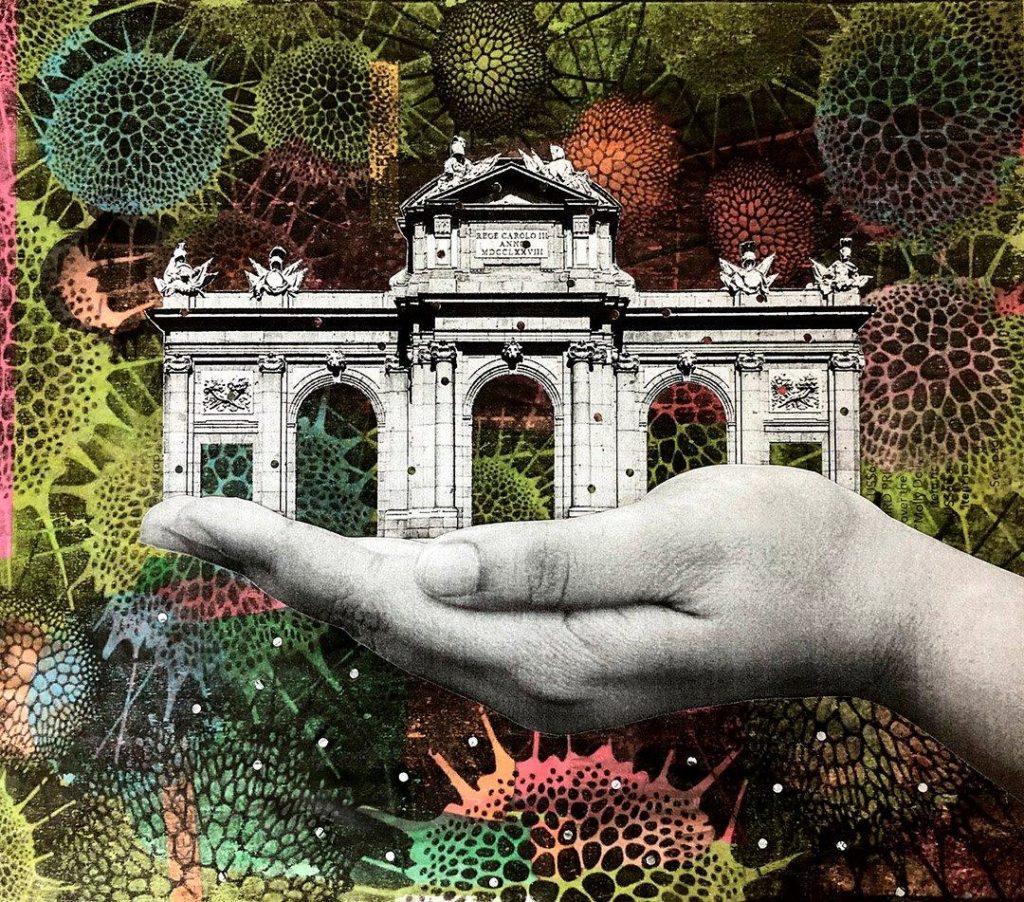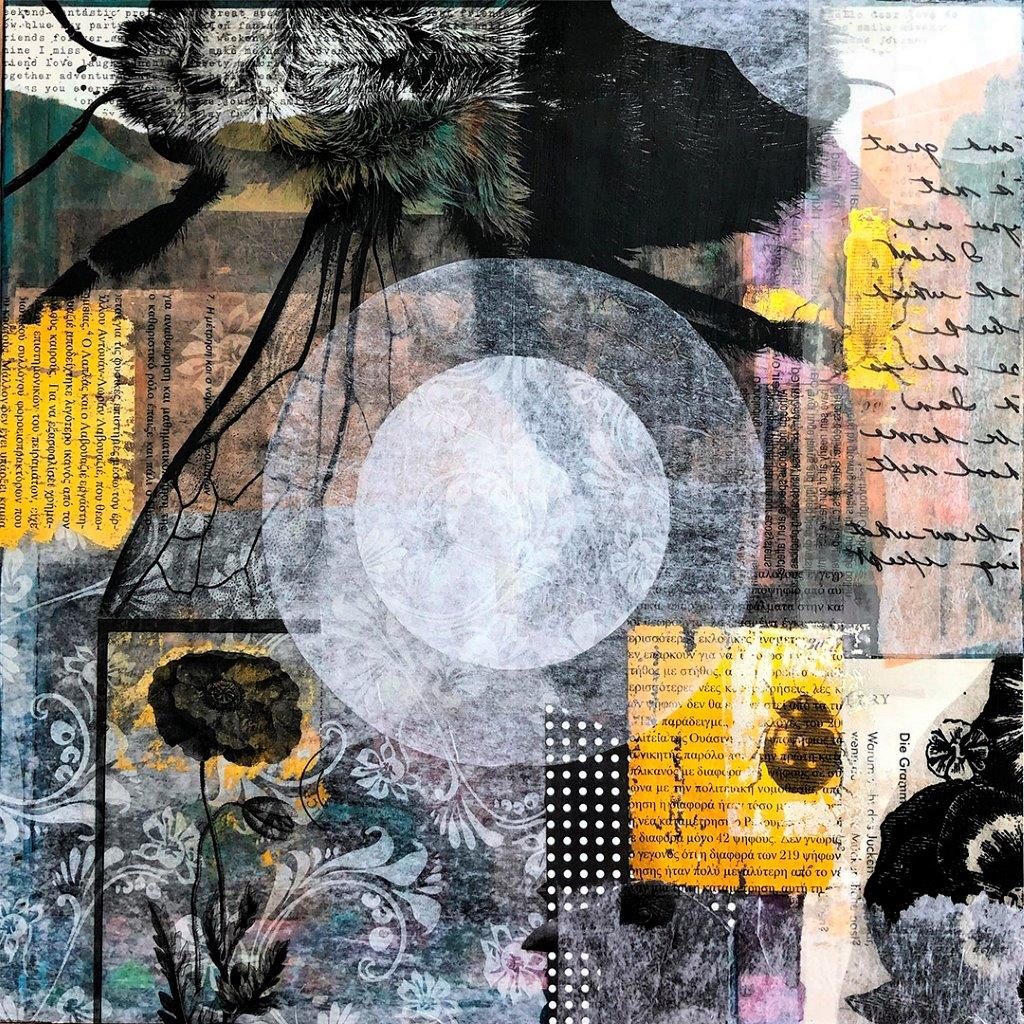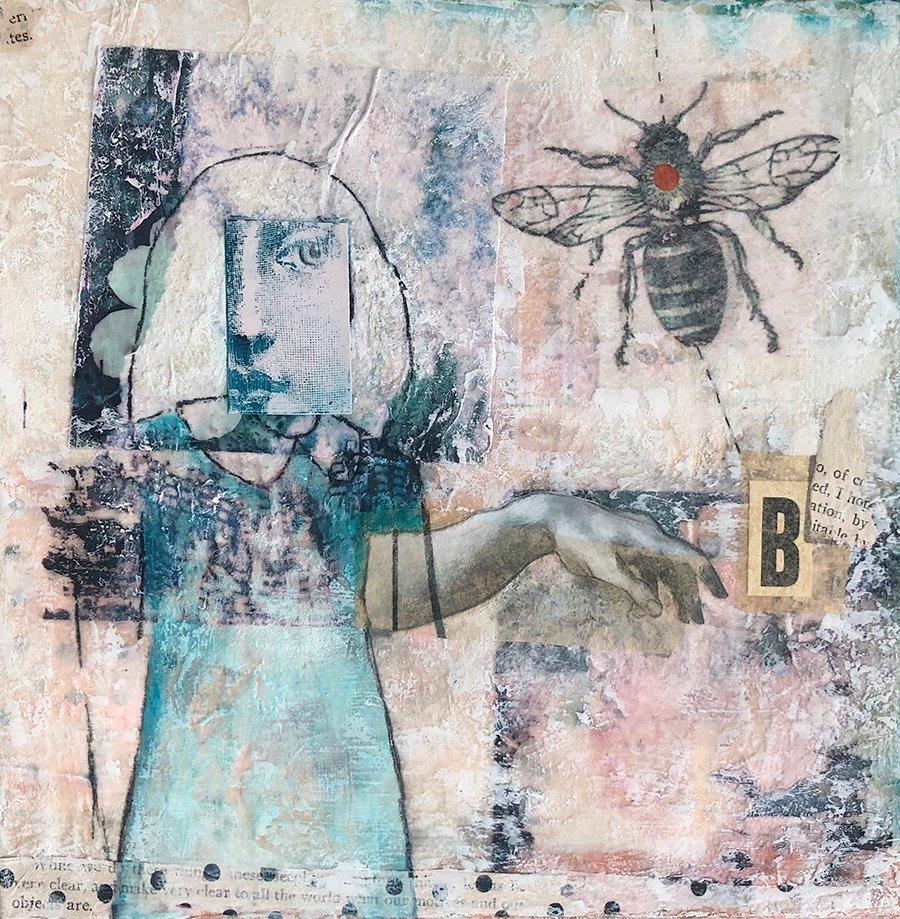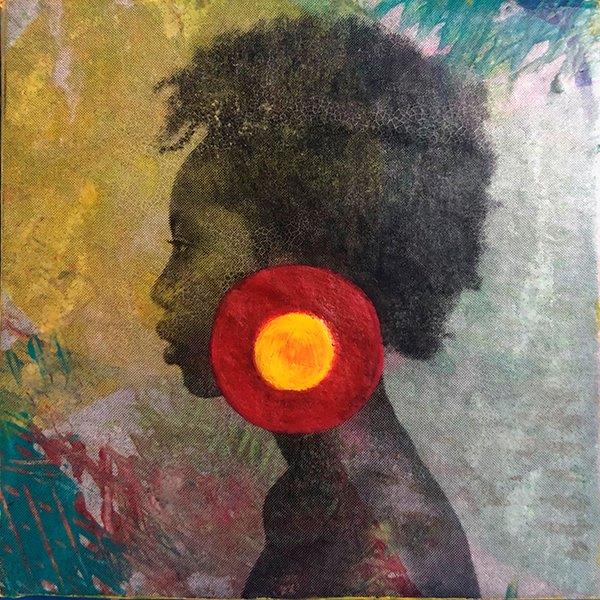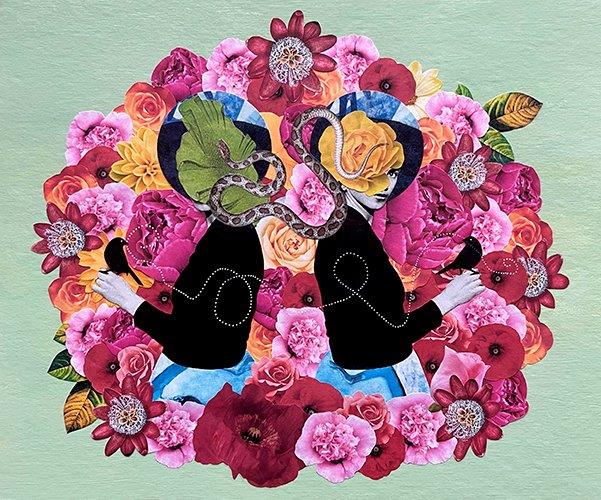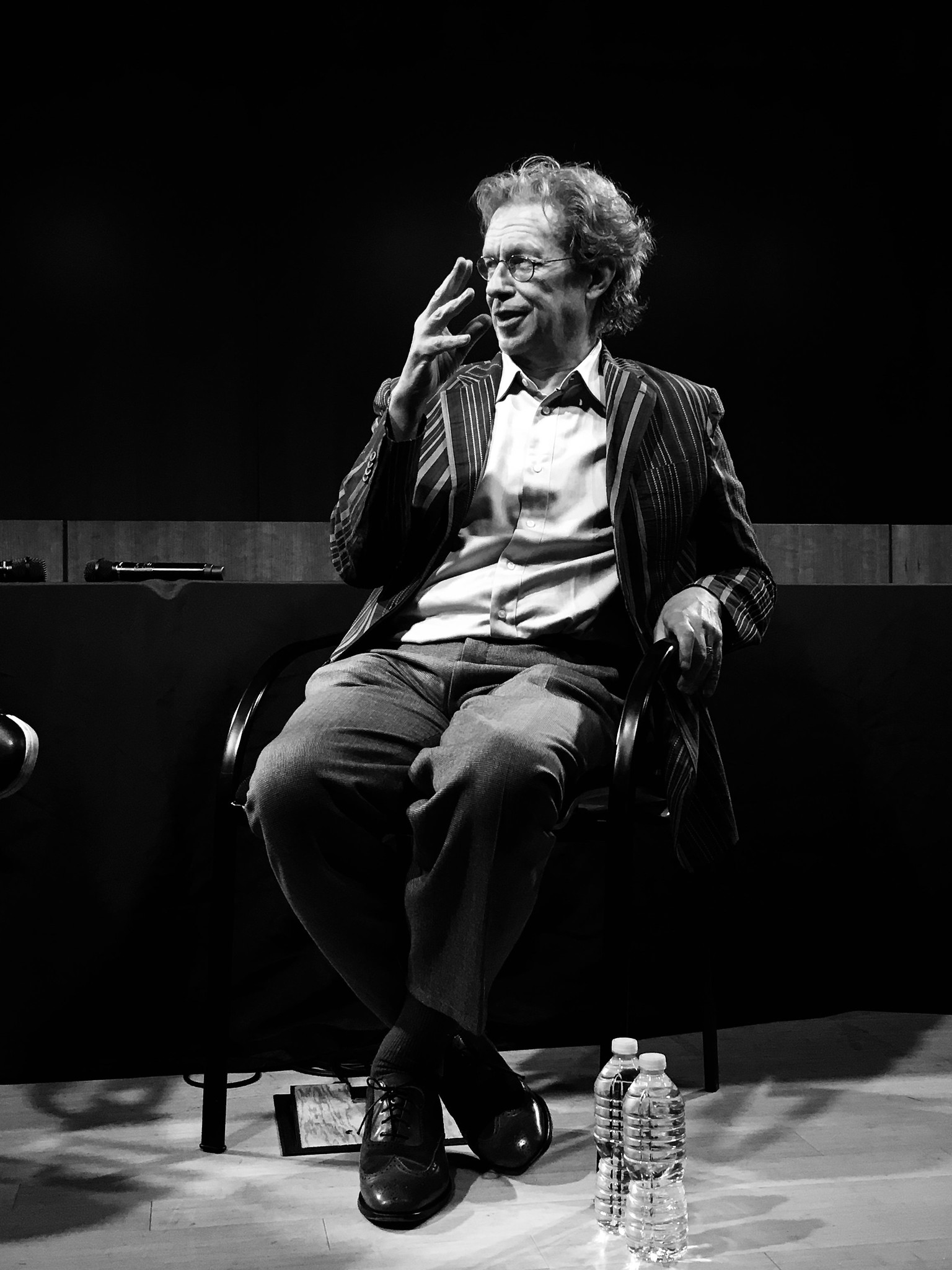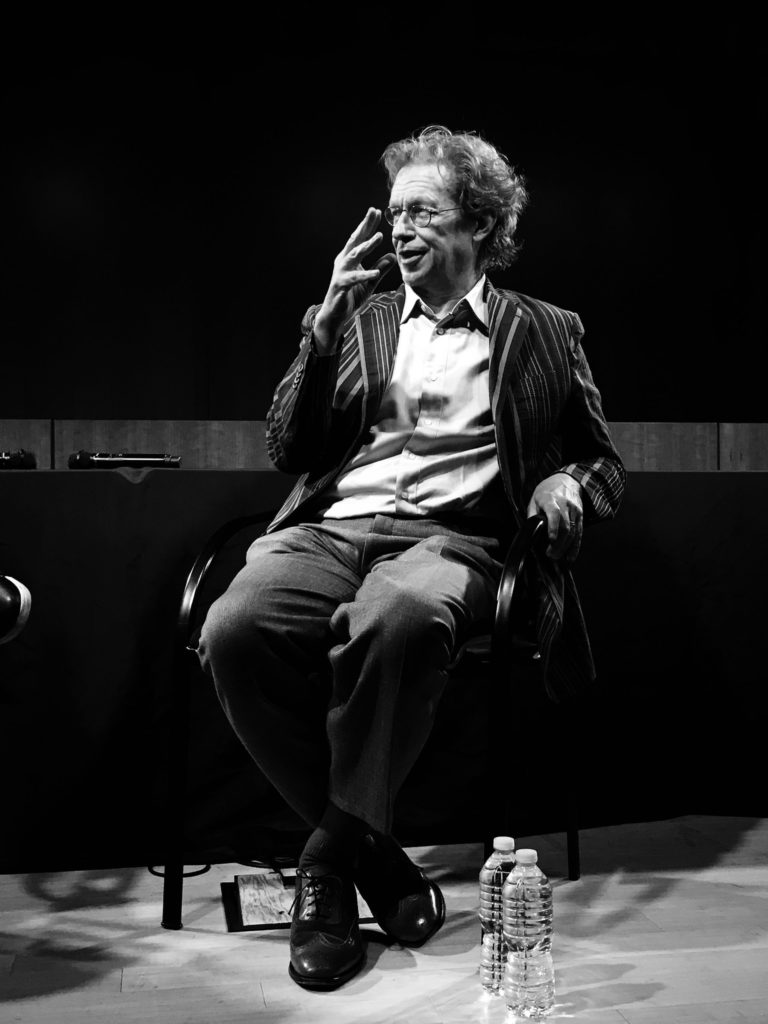
SUPREME COOLNESS
By MICHAEL OFFWORLD
Canadian artist who also works as a speech-language pathologist specializing in stuttering therapy. My analyst says I have a complex. I agree. I am complicated.
My son hit a snowbank with his car and shattered the front bumper. When it’s cold outside, 30-below cold, plastic bumpers that might flex and bounce back in the summer, shatter like glass. It doesn’t take much. That’s what happened to his bumper and his facade of stoic emotion.
Most of us, especially those with the good fortune of being born in a part of the world where it snows for several months a year, have had a similar experience of backing up into something, sliding into someone’s bumper, or having someone hit our precious vehicle. It’s a bummer, but a normal life experience right? A minor hardship that we get through and eventually forget.
But who is to say how difficult it is? I’ve had many small car accidents over my years, mostly to my Dad’s vehicles (sorry Dad), and now occasionally to my own, despite driving with mature care and attention. I feel embarrassed, maybe mad, but then I carry on. My son, on the other hand, was devastated. Not because his car was damaged, but because of what other people might say.
“They’re going to tease me for being a bad driver,” he sobbed.
I didn’t know how to respond to that aside from my usual unhelpful advice: “Fuck those guys. Who cares what other people say?”
Here’s the thing. My son is cool, but he doesn’t know it. His crystal-clear nature of coolness is completely opaqued by the agitation of his muddy beliefs about himself, how his life has played out so far, and how he thinks it is supposed to be. He has been teased and laughed at for his self-perceived shortcomings; I’m quite sure of it from clues he’s let loose and from the universal knowledge that high school is hell.
If I could keep my kid out of school and away from bullies, dumbasses, and ignorant bystanders until he was an adult, would his self-esteem traverse this period of life without growing a sense of inferiority and fear of rejection? Without fear of being teased, or worse, fear of being physically attacked and killed? If I could have put him in a safety bubble and taught him about compassion through stories of people’s resilience and kind deeds, would he emerge from his cocoon ready to let all the crap people can throw at him slide off his self-generated force field of cool? Or is there some way I can teach him when it matters that, despite what other people say, he is cool with a coolness that cannot be touched by anything inside or out. That no self-talk, no teasing, no aggressive touch can harm the thing that is, was, and will always be untouchable?
Supreme coolness.
Perhaps I reacted so strongly to his pain because of my own experiences in high school. My personal trauma came from not being able to speak—that is, reliably say what I wanted when I wanted. I stutter. Or I used to. I’ve had good therapy and I can honestly say that I’ve overcome it. I can actually turn my stuttering on and off at will and not feel any shame or frustration. It is my superpower. I’ve been provided with a second chance to say all the things I could never say when a deep fear of stuttering ruled my life.
Even though I had a dammed-up river of sharp wit and piercing slanders to sling at all the mean people in my world, my armour kept me mute. My armour was to withdraw and act like I didn’t care. It wasn’t all defensive put-downs and laughs that I was missing out on: I would have been a good speaker, a fun friend, a genuine smarty pants (the good kind). High school was a hell of approach-avoidance conflict and I wanted nothing but to be not like me, and only like the cool kids who tormented me. (Since I’m throwing around psychological terms here, let’s add Stockholm Syndrome!)
One time, grade 10, we had to memorise and recite a Shakespeare soliloquy. I chose Hamlet’s “To Be or Not To Be.” I see now that my troubled, naïve mind could not have chosen a more appropriate piece. It really hits the old thematic spot: Life is shitty, I might be better off dead, except, being dead is probably worse.
I chose to endure the slings and arrows of my perceived tormentors and endure the thousand natural shocks that flesh is heir to. I forced my perfectly memorised Hamlet out, spitting and stammering those pained words into the world. My eyes were open, but I couldn’t see my classmates staring at me or my teacher wondering what to say after I was done. A blind, stubborn part of me was solely focussed on making my presentation because I was enraged at myself for being a stutterer and at those who could speak without fear that it would become stuck in their throat. The real me was somewhere far away, deep inside a psyche of frustration and shame, and willfully looking away because to see, hear and feel what I was feeling would have been too much to handle.
I never talked to anyone about this struggle, because I wasn’t developmentally equipped to face it. I did not have the ability to look at my feelings objectively because my feelings directed my thoughts. This is how I know my son also faces the same torments. He was not worried about his car being damaged, he was freaking out because of what he imagined what his peers would say to him when they learned he smashed his bumper.
If I knew then what I know now, I would do things so much differently. Look up this phrase, and you will see a pile of songs. I’m not discovering anything new here. We have all had moments where we thought about this. Wouldn’t it be great to re-do a scarring experience in a different way? A way that would produce a different outcome?
Current me can say these words easily: I am quite cool. Normally that would make me uncool, especially with the word “quite,” but that doesn’t matter. The thing is, I am cool independent of what others think and that makes me cool. I’m cool, you’re cool, we’re all cool.
The obvious but impossible lesson is that if I could go back in time to high school I would understand, contrary to my own beliefs as well as the words and deeds of my tormentors, that I was cool, despite stuttering and my reactions to it. I just didn’t know it. I couldn’t know it. Coolness comes from inside our souls and not some unelected academy on the internet that decides what is and isn’t.
And there’s no point in discussing what is or isn’t cool. It’s arbitrary. My idea of cool might match up with yours or maybe maybe not. I think Bruce Willis is cool, but maybe he’s a dick in real life. I mean, who are actors, anyway? Actors are people like you and me, but that gets lost. We don’t want to see our favourite star buttering her toast, we want to see her overcoming obstacles and showing us how strong, cool people are supposed to be in the world. We latch on to cool, because we fear being ostracised from the tribe. If we like what everyone else likes, then we are more likely to have someplace to belong. As we grow up, around the high school age, we consider the fact that we will leave our immediate family and venture out on our own. Some are forced to leave, some want to leave, some leave earlier or later, some never leave, but the expected path is that we grow up, learn how to be independent, and venture out into the world on our own. This is a scary thought if we don’t have allies or we don’t trust the people around us to love and look after us. We don’t know that our most important ally is ourselves.
Life can be scary, like stepping off of a cliff, or easy, like stepping off of a cliff. Some people are afraid of cliff-diving and some are not. It has nothing to do with the cliff. It has everything to do with the person jumping. Do we believe that we can do this growing up stuff because others do it over and over again and it is normal? Or are we stuck in our minds, looking but not seeing, and unable to take the next step because that deep part of our psyche, the one that retreated from the world, has final control and wants to protect us from what it fears—even if the object it fears is an illusion?
The fearless actor fighting off wickedly powerful thieves in a California high-rise does not exist when the movie stops, but we can hold on to the idea of him and the power he has to defeat evil as if he were real. The same with those who have harmed us. We are fast learners and hold on to the idea that anyone or anything can and will harm us.
If I could go back in time, the sneers in the hallway, the time ʼ69 Chevelle Kyle decided to shove me into a stack of folding chairs, or the cute girls who imitated my stuttering when I walked into the class … none of them would matter. And it would not be a harming-my-tormentor kind of revenge. I can see myself walking around in a bubble of belief that I am cool and all that noise and smoke going on around me could never tarnish the shine of my coolness. The revenge would be that I would no longer be a target for abuse because the cool kids and their minions could not reach me. They would be so busy looking for someone they could knock down to enhance their own weak self-esteem, they wouldn’t bother with someone who could not be knocked down. Kyle wasn’t cool because he had a nice car. His car was cool, but he was not. I was mistaken to give him that power. His true coolness was hidden behind a predator-image that he had to develop to survive his own shadows. I’m sure he had his own story of suffering.
How can I flick that switch for my son? I can fix his bumper, but I don’t know how to fix his belief that he is less than for having a simple accident. I didn’t manage to learn this lesson until I was middle aged. I’m still learning it! Is the suffering of allowing the so-called cool ones with social status to influence how we feel about ourselves a normal part of being a young human—one who transitions from a safe, loving family (if you are lucky), to an uncertain world where some love you, some don’t, but most don’t even know you exist?
The Buddha said that suffering exists because we don’t want to acknowledge it is real. We do all kinds of mental acrobatics to deny its existence in a vain attempt to not feel the pain. He also said that there is a cause for our suffering: us. We do it to ourselves through our reactions to the bad things that happen to us or the habits we choose to avoid feeling the feels. And if we want to reduce the pain of life, then we just need to learn how to react better! It’s a feel-the-pain-and-do-it-anyway kind of thing.
I feel like these noble truths are a little judgy: Hey, all you have to do to feel cool is to acknowledge that suffering is real and it’s your own fault if you don’t! It feels like another kind of bullying.
How can we teach our children, ourselves, to opt out of this belief system that informs our culture? Those people are cool, so what they say must be cool and I should believe them. Those people, the other people, are not cool. Don’t be like them. How do we teach this to our kids without making them feel worse for letting it happen in the first place?
We live a dynamic existence that is always shifting like waves on the ocean. One second we see something cool and the next it is gone, back into the ocean like a one-hit wonder. We learn from each other, but I think the real healing finally comes from inside when we realize, “Oh yeah, I guess there is nothing wrong with me and I don’t have to hide my coolness from the world.”
Also, as trite as it sounds, shit will happen. It is not cool when bad things happen, but it is cool when we feel the bad, acknowledge it, and then carry on doing the good that needs to be done.
All I can do is rejoice in the coolness of my son who is in a different phase of his life (i.e., love him unconditionally). I could tell him everyday how cool he is when he walks out the door, but he won’t believe it until he believes it. Instead, he believes the devil who says he isn’t cool and he must protect himself from danger all the time; protect others from knowing how he really feels. Maybe he has to go through this because it’s some unwritten rule that cannot be escaped. Until it can.
Here is the secret of being cool. Consider the tetralemma: You are cool. You are uncool. You are both cool and uncool. You are neither cool nor uncool. Change the pronoun to whatever you like. Find the truth. Be cool.



